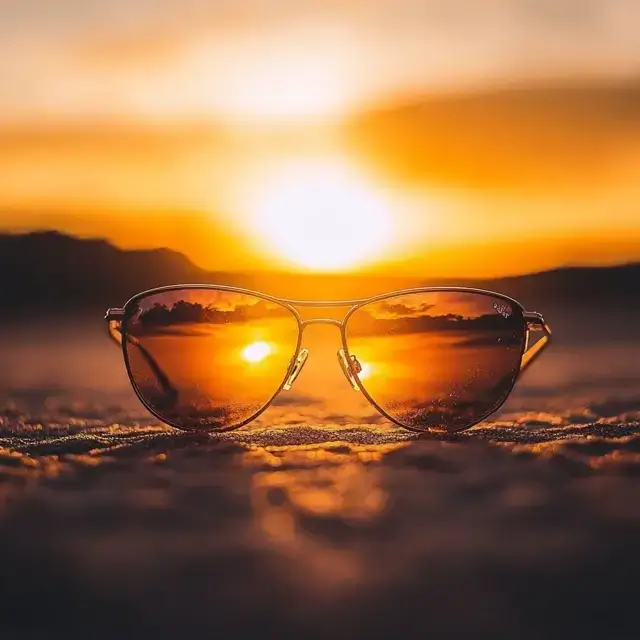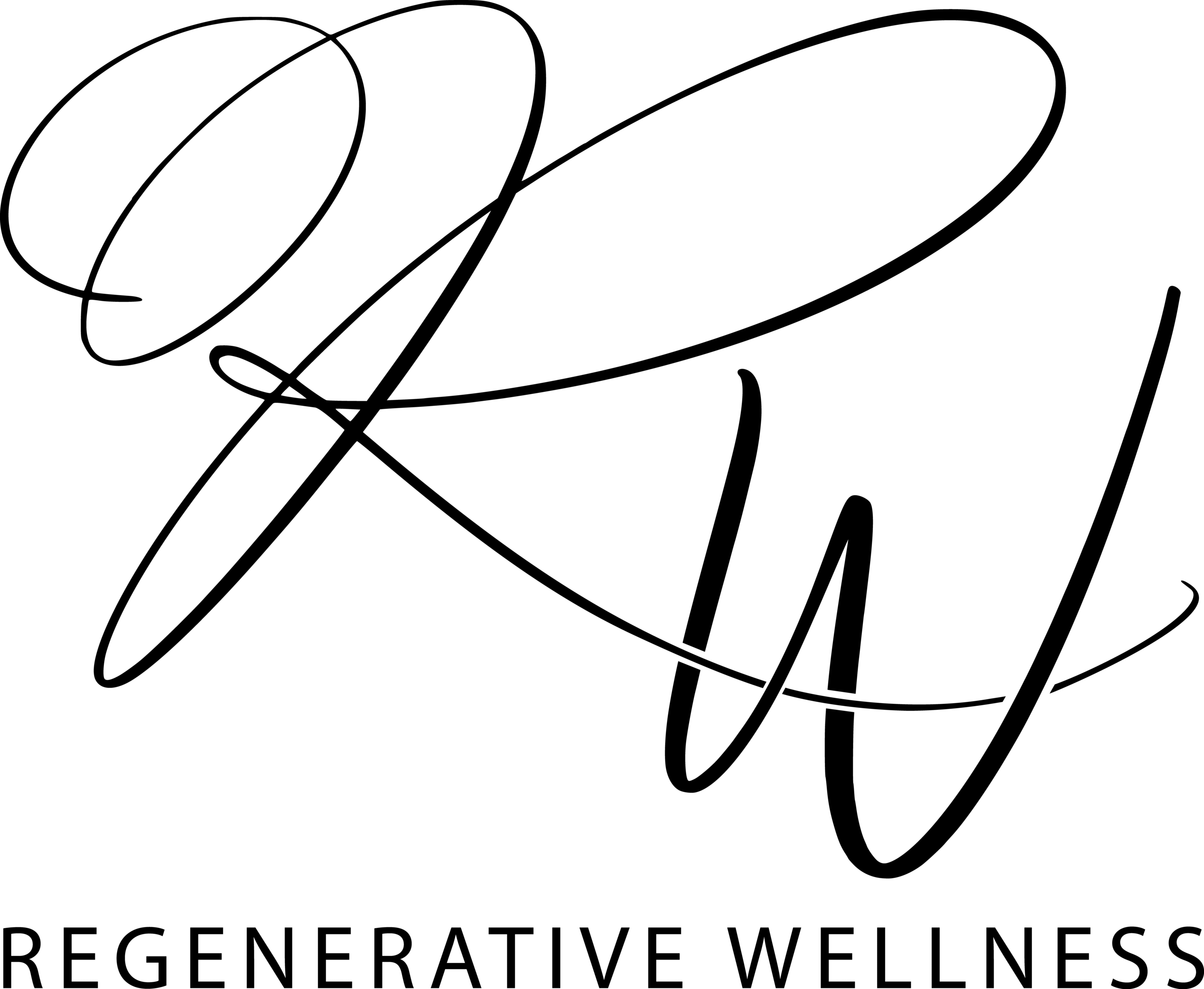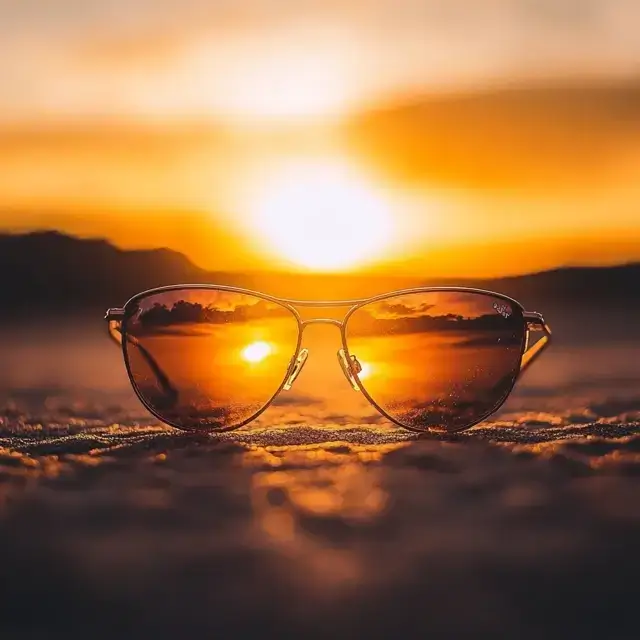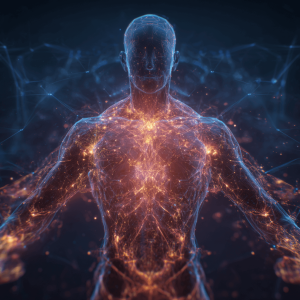
A Bright Misconception
In modern wellness culture, we’re told to block the sun at all costs — SPF on the skin, sunglasses on the face, and blinds drawn tight. But are sunglasses really necessary for everyday life? Or are they interfering with one of the most powerful healing signals your body receives: natural light?
Emerging research shows that the light entering your eyes — not just your skin — plays a critical role in regulating hormones, sleep, metabolism, and even your skin’s natural sun tolerance.
The Eye-Brain Connection: Light as a Signal
Your eyes are more than visual tools — they are biological sensors directly linked to your brain’s master clock: the suprachiasmatic nucleus (SCN).
According to Dr. Andrew Huberman, neuroscientist at Stanford University, certain cells in your retina (called ipRGCs) detect sunlight and send signals to the brain that regulate:
- Cortisol (energy and wakefulness)
- Melatonin (sleep and repair)
- Serotonin (mood and hormone balance)
- Dopamine (motivation and drive)
When you wear sunglasses, especially in the morning, you distort or block these signals — affecting everything from mood to metabolism.
“Exposing your eyes to natural light early in the day is the single most effective tool for optimizing sleep, mood, and hormonal health.”
– Dr. Andrew Huberman, Huberman Lab Podcast
Hormonal Health and Morning Light
Here’s what happens when sunlight reaches your eyes in the first hour of the day:
- Cortisol increases (naturally) — giving you energy and resilience
- Melatonin is suppressed — aligning your sleep-wake cycle
- Dopamine and serotonin are activated — improving your mood and motivation
Without this morning light cue, your body stays “confused” — sleepy, sluggish, and hormonally unbalanced.
So… are sunglasses really necessary in the early morning? Not if you want balanced hormones and stable energy.
Sunglasses May Increase Sunburn Risk
Here’s the twist most people don’t expect: wearing sunglasses could make you more likely to burn.
Your eyes detect light intensity, sending signals to the brain to begin protective processes — like melanin production (your body’s natural sunscreen).
If your eyes are shaded, your brain assumes light is low, even when UV is high. This can:
- Delay melanin response
- Reduce squinting and visual discomfort (natural warning signs)
- Increase sun exposure time without proper protection
A study published in Photodermatology, Photoimmunology & Photomedicine in the 1990s found that people wearing sunglasses burned more easily than those who didn’t, under the same sun exposure.
Not All UV Light Is Dangerous
We’ve been conditioned to fear UV rays. But just like food, sunlight is a nutrient when taken in the right dose.
UVB light is essential for vitamin D synthesis, which supports:
- Strong bones and calcium regulation
- Immune health
- Mood and mental wellbeing
- Hormonal balance
Experts like Dr. Jack Kruse and Dr. Paul Saladino argue that moderate, non-burning sun exposure is one of the most powerful anti-aging and healing tools available — and our eyes are essential in determining the right dose.
When Sunglasses Make Sense
Of course, sunglasses have their place. We’re not suggesting you toss them forever.
Use sunglasses when:
- Driving into low-angle sunlight
- In environments with high-glare (e.g. snowfields or open water)
- You’re experiencing photophobia or recovering from eye surgery
But in daily life — especially:
- Morning walks
- Gardening or working outdoors
- Sitting in natural light
…it’s better to let the light in. So, ask yourself again: are sunglasses really necessary right now?
Consequences of Chronic Light Misalignment
Consistently blocking light from the eyes can lead to:
- Disrupted circadian rhythms
- Hormonal imbalances (thyroid, adrenal, reproductive)
- Mood disorders (depression, anxiety, SAD)
- Chronic fatigue and poor sleep
- Increased sun sensitivity and burning
Even sunscreen and hats can’t correct for the disconnect between your eyes and the sun when your brain thinks it’s dusk but your skin gets midday UV.
How to Reintroduce Natural Light (Safely)
Ready to break up with your shades (at least some of the time)? Here’s how to support your biology with light:
1. Get Morning Light
- 5–15 minutes within 60 minutes of waking
- No sunglasses, no window glass
- Barefoot grounding = bonus points
2. Ease into Midday Exposure
- Short bursts at first (5–10 minutes)
- Focus on arms, chest, and legs
- Listen to your body — avoid burning
3. Swap for a Hat
- Wide-brimmed hats shield skin but allow light to reach your eyes indirectly
4. Eat Antioxidant-Rich Foods
- Liver, eggs, grass-fed butter, berries
- Consider astaxanthin or omega-3s for extra skin support
5. Track Changes
- Observe improvements in sleep, mood, and energy over 2–4 weeks
Final Thoughts: Light Is Life
In a culture that profits from sun fear, we’ve lost touch with one of our most vital biological tools — light signalling through the eyes.
So next time you reach for your sunglasses, pause. Ask yourself:
Are sunglasses really necessary right now?
Let your body reconnect with its ancient rhythm. Let your eyes see the sky, not just the shadow. Let the sun become medicine again.
Further Reading
Huberman, A. (2021). Using Light to Optimize Health
Kruse, J. (2020). Sunlight Rx and Circadian Biology
Saladino, P. (2022). The Carnivore Code
Holick, M. (2008). Vitamin D and Sunlight: Strategies for Improving Health




